Shop by Industry
Industries we support...
Products
START SHOPPING...
EXPLORE by category
Product Series
Resources
Contact
Find a Dealer
We've put together a guide for helmet lights to make it easier which light best fits your needs. The guide explains why you need a headlamp or helmet light, what styles work on different helmets, and what features are important to consider.
Helmet lights have been around for many years. While not every firefighter or fire department chooses to utilize them, helmet lights are amazing tools that provide necessary illumination in high stakes situations.
Helmet lights have evolved to be brighter and more durable. Here are some tips and considerations to take into account as you purchase your next fire helmet light.
As a firefighter, you must have lights to assist with situational awareness. Right angle lights are often considered a firefighter’s primary light source. Helmet lights provide valuable task lighting to help you see and be seen on the scene. Depending on the style, a helmet light can be a small, powerful searchlight or a broad illumination for short-range tasks.
Traffic accidents? Structure fires? EMS? Search and Rescue? Inspection?
Often, the first consideration for your light is how well it will pierce through the blackest of smoke in a burning structure. A smoke-cutting and search beam is very important, but it's also important to think of your job tasks. More than 70% of your calls are not fire-related. Traffic accidents and medical will likely be the majority of your calls.
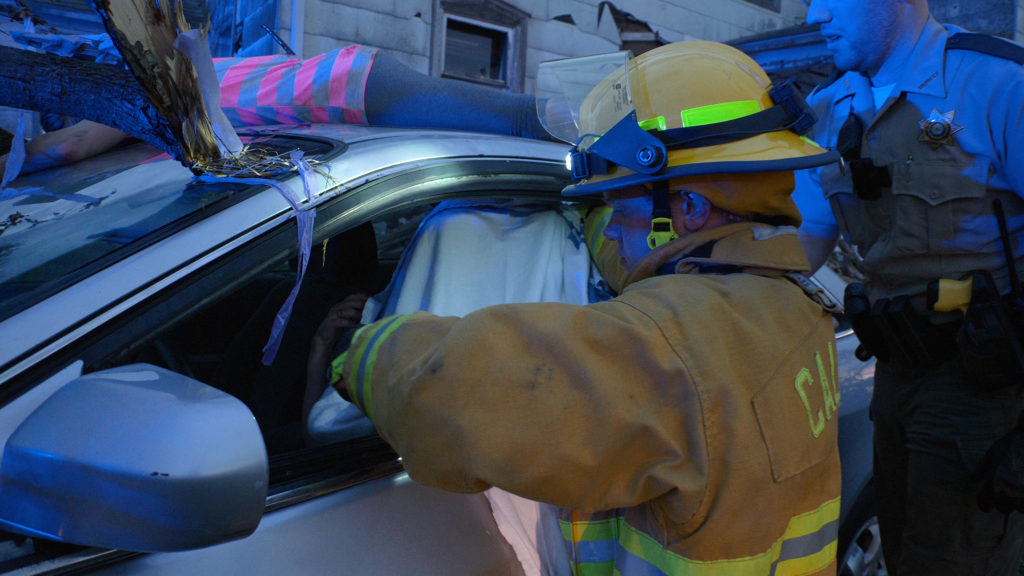
In these scenarios, you may not need a light that is so bright it will light up the side of the moon. More importantly, you need high-quality light that lights up the 2-15 foot working space in front of you. If you already have a right angle light, your helmet light doesn’t need to pierce through thick, black smoke. Your helmet light will complement your right angle light by giving you a broad swath of light so you can assess the immediate situation and make better decisions.
The obvious answer is ‘on a helmet’. Tilt the light straight out or down, depending on your needs. Straight out for searching or reading smoke. Tilted down for short-range task lighting or just being considerate to whoever you're talking to.
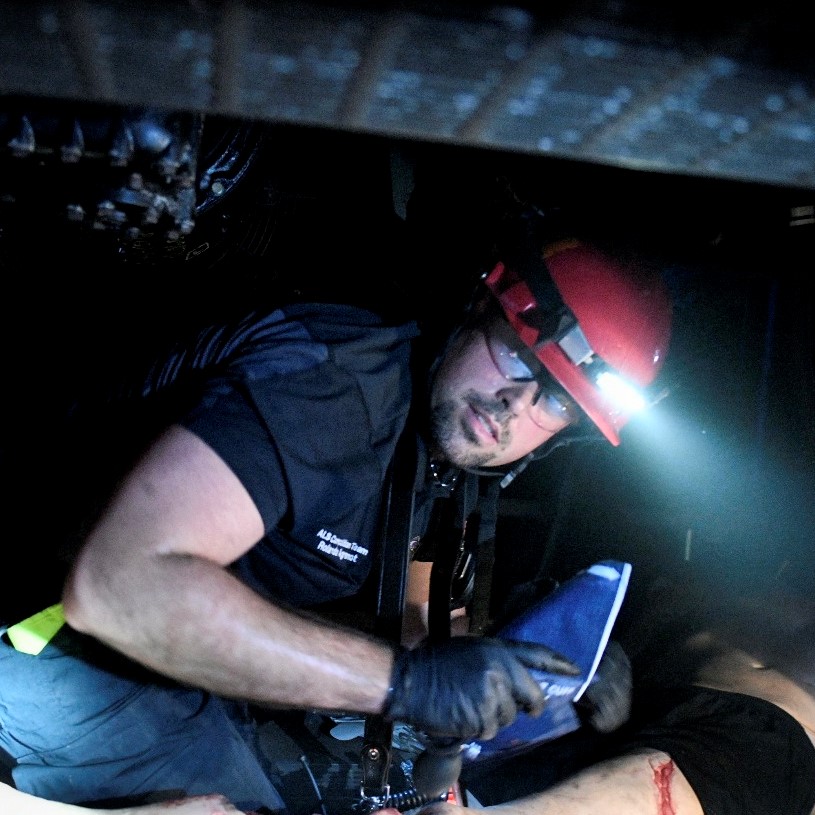
There's plenty of creative uses beyond that. Some firefighters flip the light on their helmets and tilt the light upward to read the direction and speed of the smoke inside a structure more easily.
Paramedics and EMTs wear their helmet light around their neck, pointed down while working on a patient. Others use a side-mounted light that can be removed from the helmet to hand-hold it and control the light's direction.
It’s important to think about the way you work and use your light. It can help you determine what kind of light you need. Multiple lights can be beneficial for different uses.
Again, let’s look back at what applications you are dealing with and how you use your light in those applications. If most of your calls are working in live structure fires or rural traffic accidents, a bright, tight search beam will be the best option for you.
In this case, high lumen output is an important factor in what light to choose. You need the light to cut through smoke or search longer distances. An underpowered light with a weak beam will disappear in the lightest of smoke. Many side-mounted lights feature a tight, focused beam.
If you do many EMS calls or are running hose nozzles, your priority is to light up the immediate space in front of you. You need to see injuries inside of a med bag or the controls on your tools. Quality of light is much more important for these types of applications.
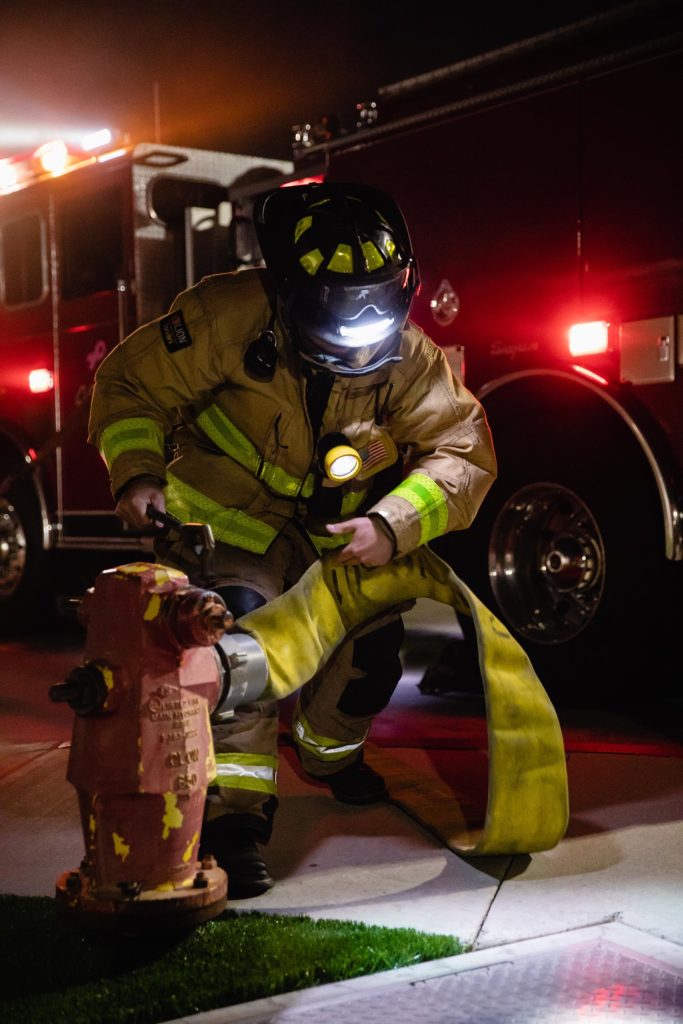
A panoramic beam of light will provide a more complete and even illumination of the immediate area. You can see more of the area and not need to constantly move your head back and forth to light up different things like you would with a tight beam light.
Another benefit to a wider beam is it reduces eye fatigue over time. If your light produces a tight circle of very bright light, your eyes are constantly adjusting to the bright circle of the beam and the rapid fall-off to complete darkness around it. This makes your eyes work extra hard to be adjusting to those differences constantly. This results in eye fatigue and then potentially leads to headaches, irritability, and impaired vision.
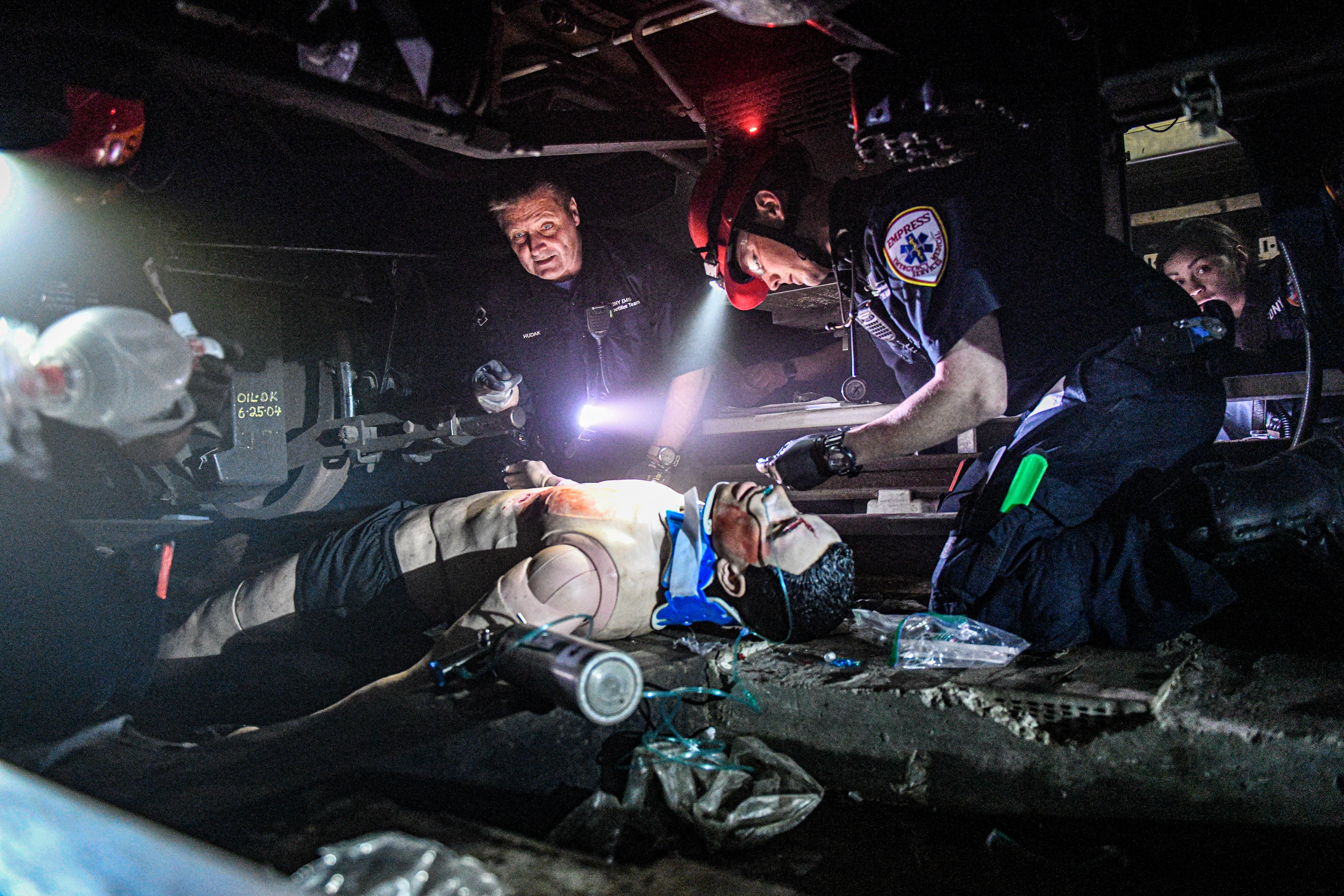
The color accuracy of your light is a critical factor when doing medical work. The coloration of the eyes or skin is important for diagnosing symptoms. Light with low CRI will give a color cast, leading to potential mistakes of a victim's condition. A high CRI light gives you bright, color-accurate illumination that allows you to make sound decisions faster.


AA alkaline batteries are the gold standard in the fire service. Lights, radios, cameras, and a variety of other electronics use AA batteries. Departments often supply bricks of AAs for the crew. Sourcing a headlamp that uses AA batteries is a fairly safe bet.
Rechargeable battery packs and NiMH AA are other options. Rechargeable batteries will run longer than alkaline batteries. They also require you to manage the charging of the batteries. Make sure you have extra batteries charged and accessible when you are working long shifts. Know the runtime on your rechargeable battery. If it runs out of power, you can't replace it, and you'll need to recharge it. It's good to have a backup light in those situations.
Whatever choice you make on batteries, make sure you have access to backup batteries. You don’t want to get left in the dark at the most critical time.
Helmet lighting options have changed a lot over the years as heat sinking technology, lumens, and size have improved.
Side-mounted lights date back to the Garrity lights of the 1980s, which were disposable, cost-effective options at the time. Today, side-mounted usually include a focused flashlight connected to the helmet via a silicone strap or adaptor.
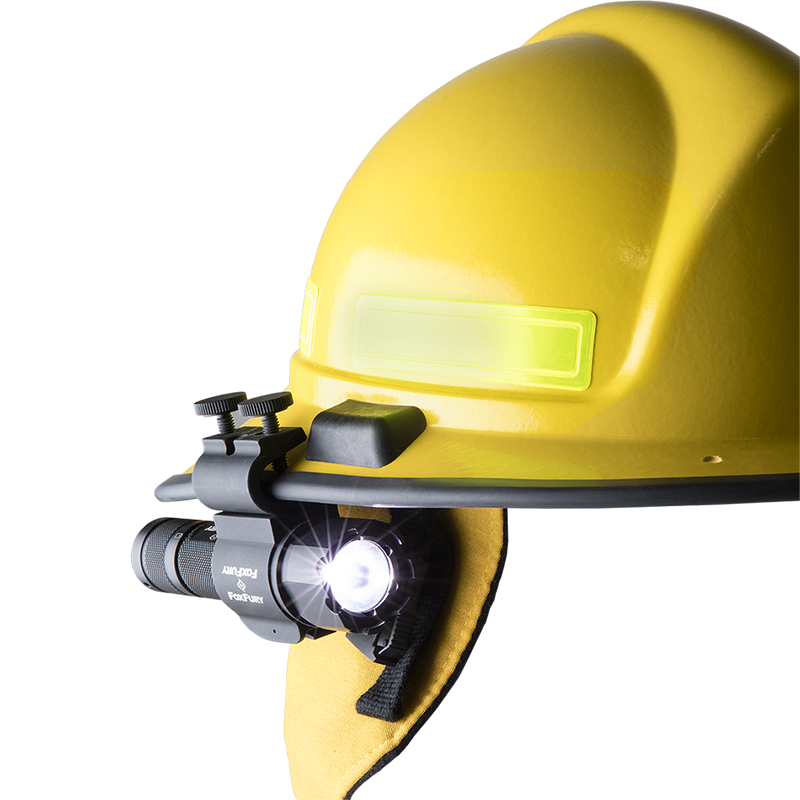
These lights produce a beam that shines further straight ahead than it does peripherally. Some of the newer side-mounted lights have the ability to detach from the helmet quickly and be used as hand-held flashlights, while other models are fixed to the helmet. There are advantages to each, but it ultimately comes down to the user’s preferences.
Side-mounted lights can create a weight imbalance where the 4+ lb (1.8+kg) helmet tilts to the side in favor of the light. Even though newer helmets are lighter, firefighters still feel neck strain due to the imbalance. Adding a second light or accessory like a FireCam to the other side can help balance the weight.
A disadvantage of side-mounted lights is that they can snag on debris and equipment inside a structure. This could lead to neck injuries or exposure once the helmet falls off.
Front-mounted firefighter helmet lights have been around since at least the 1970s. They started as helmet-mounted lamps with a corded battery pack worn around the waist in wildland firefighting applications. Many of today’s front-mounted helmet lights have a miner-style spotlight that projects light straight ahead. They usually don’t have a side-mounted light range but have greater panoramic visibility, which helps with situational awareness.
Most front-mounted helmet lights are self-contained, and the batteries are enclosed in the light head. Unfortunately, if the headlamp utilizes 4 AA batteries, the added weight can make the helmet tilt towards the front. This imbalance can create neck strain on longer shifts. Headlamps that use AAA batteries are smaller and lighter but will not last quite as long
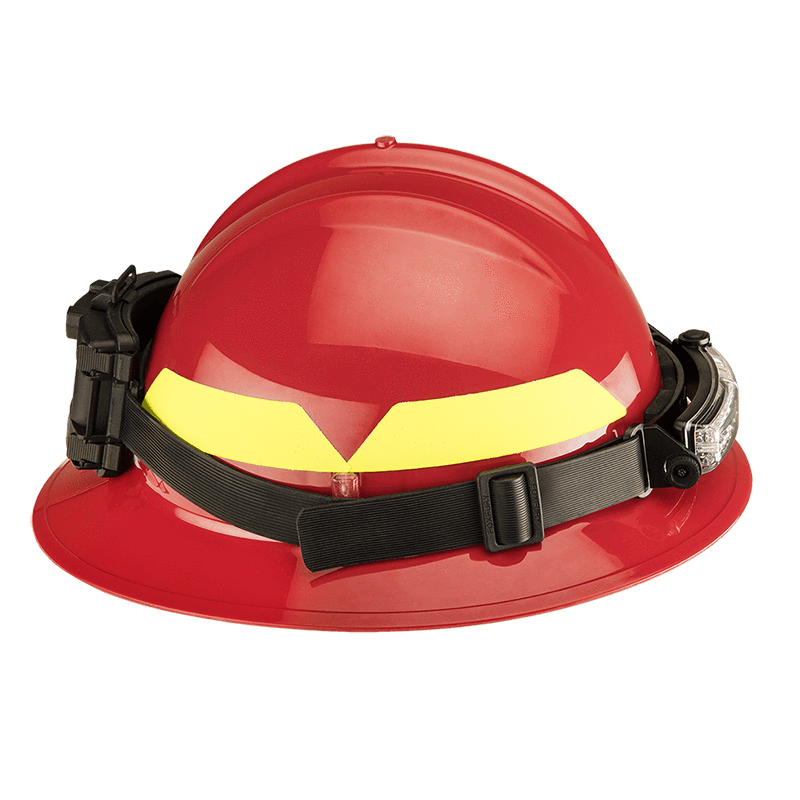
Other helmet lights position the battery pack at the rear of the strap and attach it via wire to the light head. This configuration provides a balance for the light front to back and side to side.
There are now more helmet styles than ever before with design elements that can make certain lights impossible to use. It’s important to know the limitations of different types of helmets.
An external face shield that raises above the helmet's brim may prohibit the use of a high profile, tilting, front-mounted helmet light. A low-profile light is still an option.
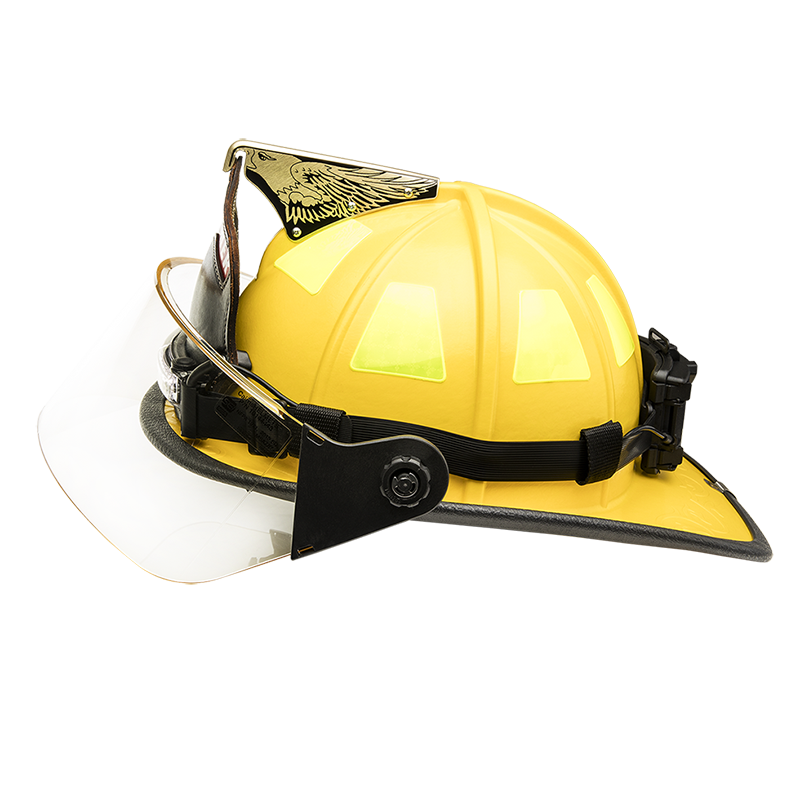
Gallet style helmets are difficult to attach a helmet light to. They have no brim to attach a side-mounted light, and the front shield extends high on the front face of the helmet, prohibiting the use of a front-mounted helmet light.
Another issue to consider is the front badge of the helmet. Many departments will not allow you to cover the badge, so a side-mounted light is the only option.
In a fire, the top of the room is the hottest part of the room. Your light, helmet, and face are exposed to higher temperatures than your torso; if you raise your head above the neutral plane.
Any items placed on your head or helmet need to be able to resist the heat. It’s the reason that helmets and goggles warp before other pieces of equipment.
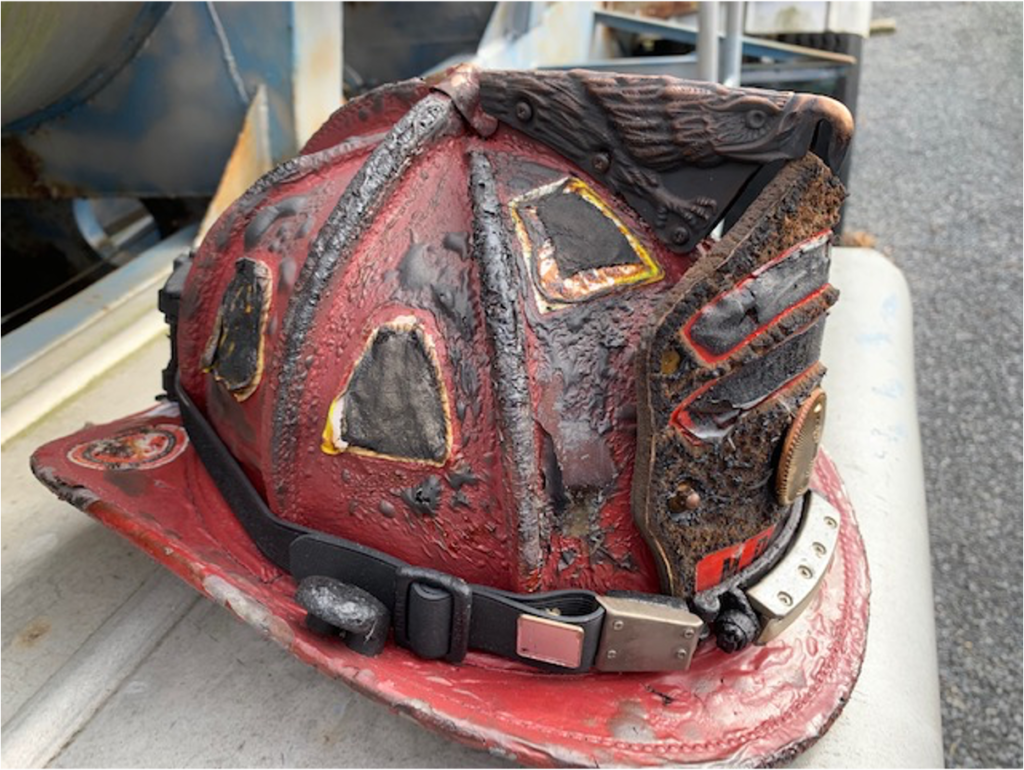
Elastic straps are very vulnerable to heat and will melt easily, causing the light to fall off the helmet. Silicone is a far superior material for straps. It can withstand much higher temperatures for longer life.
Batteries are at a higher risk of explosion and corrosion at higher temperatures. The battery compartment needs to be able to withstand extreme conditions and protect the batteries. If a compartment is built poorly, heat will cook the batteries, causing them to leak and possibly explode.
The front of the helmet is often hotter than the helmet's rear because you are mostly facing the fire you're trying to extinguish. Batteries positioned on the back of the helmet are more protected from heat. Rear positioning of the batteries also prevents the threat of acid from a leaking battery to drip down onto your face.
Features are also significant and can make or break one’s experience with light. These include:
Tilt - This allows you to aim a front-mounted light head up or down. Aim the light down for task lighting or to avoid blinding others. Tilt the light up to analyze smoke and determine its speed and direction.
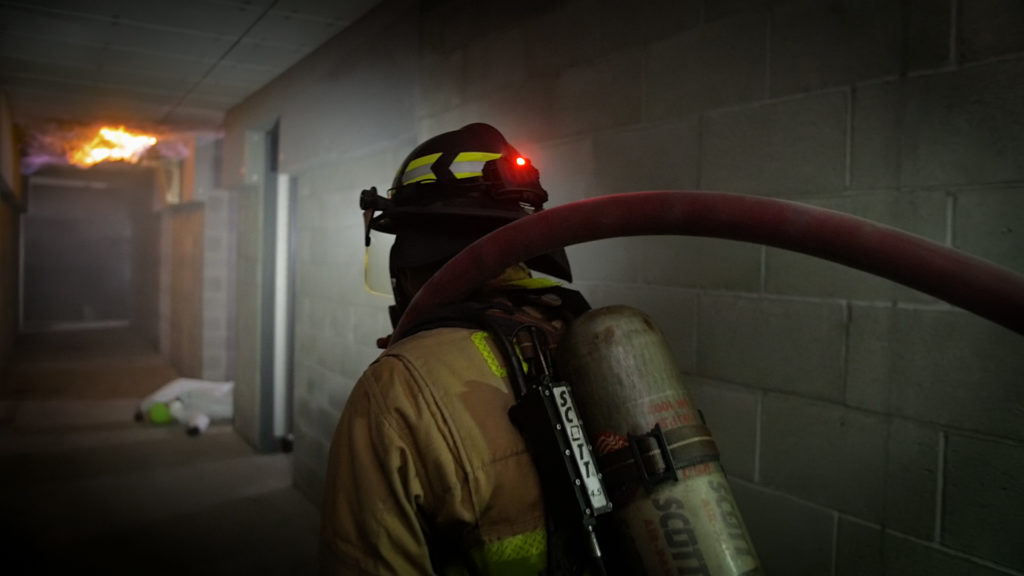
Rear Safety LED - A rear flashing or solid LED provides visibility for a firefighter from behind. It can help indicate the position of a firefighter on the scene.
Light Beam - Many helmet lights feature a focused spotlight that throws a tight beam for a longer distance but offers little general visibility. Other helmet lights have better panoramic lighting to give you better situational awareness of the overall scene.
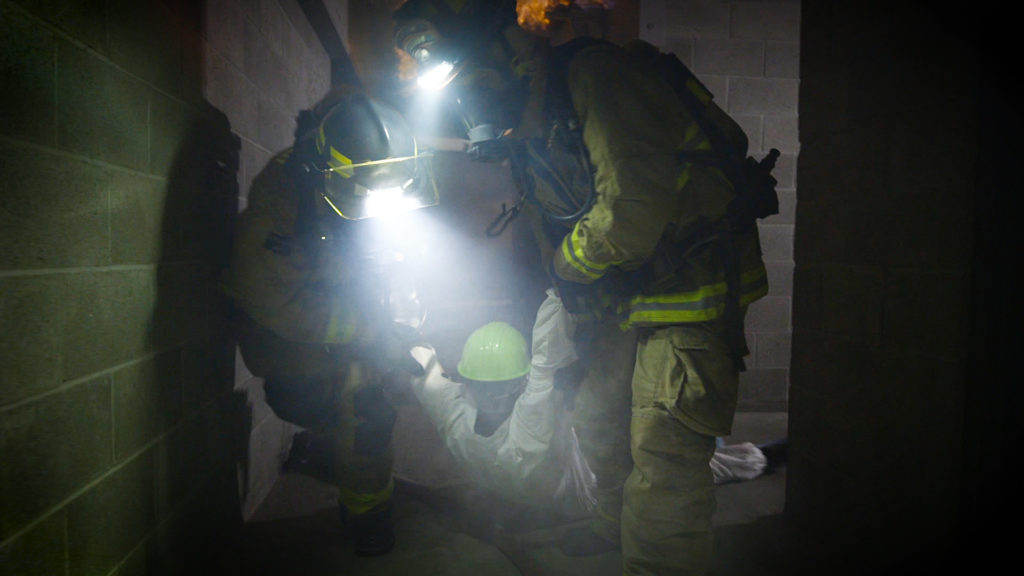
Color Temperature - Lights vary in color temperature. Standard LEDs are great for general illumination. High CRI LEDs represent colors more accurately, which is critical in certain situations like medical calls.
Helmet lights are one of the most effective lighting tools for firefighters. Since they are mounted to the head, they always illuminate the direction that you are looking. They are ideal for short-range search and task lighting. Helmet lights should be top consideration for every firefighter when you are looking for personal lighting.



Enter your details below to save your shopping cart for later.